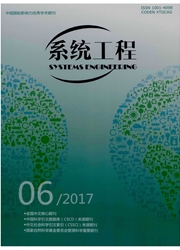

 中文摘要:
中文摘要:
研究由一个风险规避的供应商和一个风险中性的制造商组成的供应链中,当突发事件造成供应商生产能力破坏时,制造商如何选择激励策略促使供应商恢复生产?通过比较静态分析,结果表明:当产品的市场价格增加或者供应商的初始生产能力储备增大时,制造商选择提高单位零部件批发价格的策略更有效;当突发事件的破坏程度、零部件的单位生产成本、环境不确定性、恢复生产的单位投入成本、供应商风险规避程度或其保留利润增加时,制造商选择包干支付策略更有效。另外,只要风险规避程度与环境不确定性乘积保持不变,同一激励计划组合的激励作用相同。最后,针对几种特殊情况进行了讨论。
 英文摘要:
英文摘要:
This paper studies a supply chain with a risk-averse supplier and a risk-neutral manufacturer.The problem is how the manufacturer should select the incentive strategies to motivate the supplier to recover its production when there is a disruption in supplier's capacity.The comparative static results show that the manufacturer prefers to put up the component's wholesale price when there is an increase in product's price or in supplier's initial capacity. The manufacturer will prefer the lumpsum strategy when there is an increase in disruption's destructiveness,component's cost,environmental uncertainty, recovery cost,the supplier's risk aversion or his reservation profit.Moreover,the same incentive strategy package has the same effect if the multiplication result of the supplier's risk aversion and environmental uncertainty remains unchanged.Finally,several special cases are discussed.
 同期刊论文项目
同期刊论文项目
 同项目期刊论文
同项目期刊论文
 期刊信息
期刊信息
